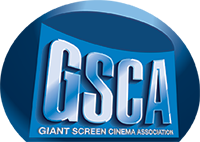 Since its inception, the giant screen’s stock in trade has been the ability to take the audience to places they couldn’t or, in some cases, wouldn’t go. This was accomplished through the presentation of pristinely clear, highly detailed images of some of the most stunning places on, and sometimes off, the planet. These beautifully detailed images have continually brought audiences back to our theaters time and time again.
Since its inception, the giant screen’s stock in trade has been the ability to take the audience to places they couldn’t or, in some cases, wouldn’t go. This was accomplished through the presentation of pristinely clear, highly detailed images of some of the most stunning places on, and sometimes off, the planet. These beautifully detailed images have continually brought audiences back to our theaters time and time again.
With the move toward digital capture for the giant screen, these traditional wide shots and aerials have suffered. When tiny details become merely indistinct and fuzzy pixel blobs the power of the breathtaking grandeur of the giant screen is lost.


Many people have asked if there is something we can do to bring back our wide shots in this digital age. This question is important enough to prompt the GSCA Technical Committee to commission a series of digital camera evaluation tests. The goal is not to pick one camera or another, but to present, in an unbiased, real-world test, the best of what the digital world has to offer the giant screen filmmaker.
 The first portion of the B.B.O.W.S. test was done this summer in Los Angeles during the second week of July. Thanks to many dedicated industry professionals, we were able to assemble five of the top digital camera systems on the market today, along with a 15 perf/65mm film camera. The digital cameras tested were the Sony F-65, RED Dragon, RED Epic, Arri Alexa XT (open gate), and the Canon C500.
The first portion of the B.B.O.W.S. test was done this summer in Los Angeles during the second week of July. Thanks to many dedicated industry professionals, we were able to assemble five of the top digital camera systems on the market today, along with a 15 perf/65mm film camera. The digital cameras tested were the Sony F-65, RED Dragon, RED Epic, Arri Alexa XT (open gate), and the Canon C500.
The goal was to shoot all the cameras in a side-by-side, apples-to-apples test environment. Every camera shot the same test scene, from the same spot, with the same framing and equal exposures. All the digital cameras used the same lens to shoot the test in order to remove one variable from the equation.
The scenes photographed were chosen for their amount of small detail at various distances from the camera. Frame grabs of each scene pulled from one of the cameras can be found below.
This test footage will be shown during the upcoming GSCA conference during the Bring Back Our Wide Shots portion of the technical session on Tuesday, September 23, at 9:00 am. The full conference schedule can be found here: GSCA conference schedule
Submitted by James Neihouse
Frame grabs from test footage:



James Neihouse is an award-winning Cinematographer, IMAX and Stereoscopic Filmmaker, Educator, Consultant, and Astronaut Trainer for IMAX. He is one of five cinematographers recently selected for membership in the Academy of Motion Picture Arts and Sciences.
